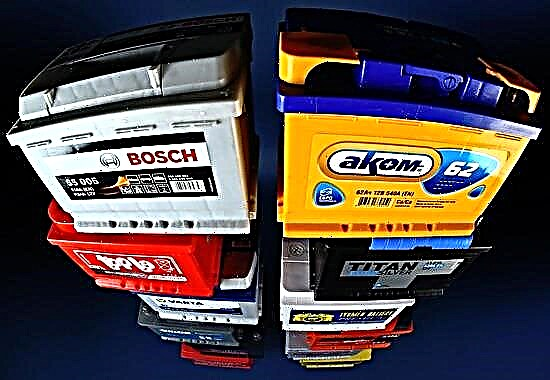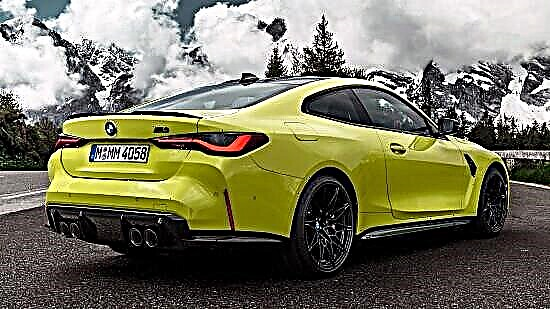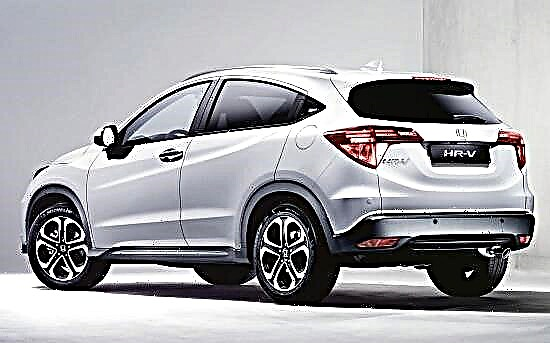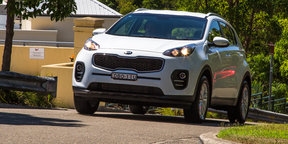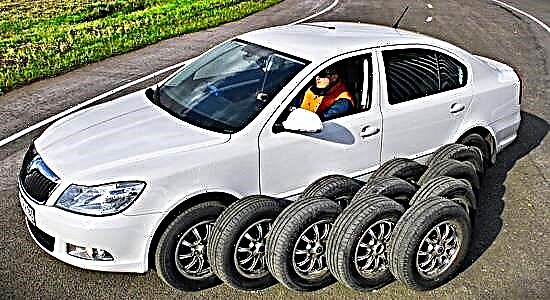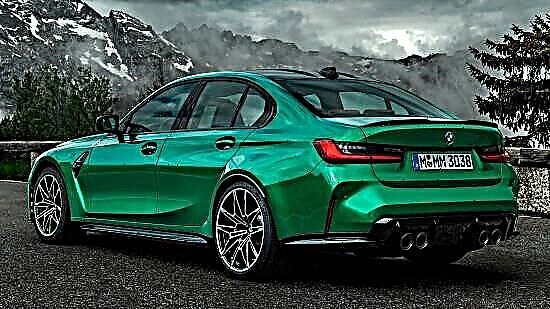The SUV car class is one of the fastest growing segments in the world, and every year more and more people choose such “iron horses”.
However, the owners of crossovers, especially all-wheel drive, do not always take a responsible approach to the seasonal change of summer tires to winter ones, since usually standard tires are marked "M + S", which, formally, allows it to be used in the cold season (although the residual tread depth should be at least 4 mm).

But here it is worth noting that, in fact, this index does not mean anything, because its application does not require any tests to confirm the ability of tires to behave normally in winter. That is why more and more often it can be seen on frankly summer tires, which devalues both letters - and "S" ("snow" - snow) and "M" ("mud" - mud).
Well, in order to be as confident as possible in winter “shoes” for your car, when choosing it, you should pay attention to the “Snowflake” brand in the form of three mountain peaks with a snowflake, which indicates successful passing of exams on a snow track.

All test participants have this marking - 14 sets of studded tires of the popular "compact crossover" dimension 215/65 R16 (and their "carrier" in our tests was one of the popular SUVs of the compact class).
The test program was chosen as standard - all tires underwent ice, snow and asphalt exercises. They took place at an air temperature of +2 to -23 degrees Celsius, however, measurements of the longitudinal dynamics were carried out in a closed hangar (to achieve a more stable temperature). It is worth noting that studded tires proved to be the most effective in mild frost, while, for example, at minus twenty, the ice began to harden, and the "steel teeth" lost their grip properties.
The first test that all experimental subjects underwent was acceleration on ice with the traction control system on from 5 to 30 km / h (in order to avoid wheel slip). Pirelli turned out to be the best here - they mastered this discipline in just 5 seconds. The second position was taken by the Nokian Hakkapeliitta SUV tires, which were only 0.1 seconds behind the leaders, and the third - by Cordiant (5.4 seconds). As for the outsiders, BFGoodrich, Yokohama and Nexen are on their list - 8.6, 7.9 and 7.8 seconds, respectively.
When braking on an ice surface from 30 to 5 km / h (not to a full stop in order to prevent ABS interference), the gold and silver winners in the previous exercise swapped places: they topped the podium of the Nokian Hakkapeliitta SUV with a score of 14.2 meters, and Pirelli is one step lower - 16.1 meters. But BFGoodrich became the worst again - they "left" by 26.3 meters.
The cycle of "ice tests" was completed by passing the winding track for a while (along the way, the convenience of controlling the crossover on such a track was subjectively assessed, since it is not possible to measure it). The Nokian Hakkapeliitta SUV tires proved to be faster than the rest, which took 72.5 seconds, outrunning the closest rival, Gislaved, by 0.9 seconds. The Nexen turned out to be the worst - they covered the circle in 86.4 seconds (by the way, they managed more disgustingly than others). In general, in terms of maneuvering, all the sets of tires showed equal results, but still the "top" Nokian took the "palm".
The next exercise is to accelerate on snow (with activated traction control) from 5 to 35 km / h. In this case, Pirelli tires were ahead of all (4.4 seconds), and only a few were behind Formula and Hankook - only 0.1 seconds. But among the outsiders were Yokohama, who spent exactly 5 seconds on acceleration.
When braking from 35 to 5 km / h, the balance of forces changed: Michelin and Pirelli (11.6 meters) “staked out” the leading position, although Yokohama (12.6 meters) was again “registered” at the end of the list.
In terms of handling on a winding snow track, the BFGoodrich tires were more pleased than others, and Nexen became the complete opposite of them (although, in general, all "experimental" showed approximately the same results).
But when it comes to lap times, Goodyear was second to none, completing the discipline in 90.4 seconds. But in the rearguard, Nexen was again trailing (96.8 seconds).
One of the important qualities of winter tires is their "rowing" properties. That is why the next test was the measurement of the crossover's acceleration on loose snow 13 cm deep from 5 to 20 km / h (with the traction control system turned on). Here the Cordiant took the first place, which managed to accelerate in 4.8 seconds, and the lowest results were shown by Viatti, who were immediately behind the leader by 1.6 seconds.
After the completion of the "winter exercises", it was time for "asphalt tests", and the first of them was braking on wet asphalt from 80 to 5 km / h. Formula tires were able to slow down in 32.4 meters, winning gold, but Toyo drove away immediately by 40.5 meters, taking the worst position. On dry surface (measurements were carried out at the same speeds) the leader remained unchanged - Formula (30.3 meters), but the outsider changed - Hankook (4 meters more).
In terms of comfort, all studded tires did not show the best results, however, there were some favorites here too: the crossover showed the best smoothness on Hankook wheels, and the least noise was made by BFGoodrich, Nexen and Michelin. As for the worst in these disciplines, in the first case it is Viatti, and in the second - Cordiant and Goodyear.
At the end of the tests, it should be noted that all the sets of tires were of good quality - none of them obviously "littered" with spikes.
The undisputed "final gold" went to the Nokian Hakkapeliitta 9 SUV tires - they easily outperformed all competitors in most exercises. True, they are more expensive than the others, and - noticeably.
At the end of the rating are the Nexen Winguard WinSpike WH62 tires - they ask for them, albeit a little, but they are definitely not designed to work at low temperatures.
The final rating of winter studded tires for SUVs according to the test results of 2017-2018:
- Nokian Hakkapeliitta 9 SUV (novelty);
- Hankook Winter i * Pike RS +;
- Pirelli Ice Zero Studded;
- Gislaved Nord * Frost 200;
- Cordiant Snow Cross;
- Nokian Nordman 7 SUV (novelty);
- Goodyear UltraGrip Ice Arctic SUV;
- Michelin X-Ice North 3;
- BFGoodrich g-Force Stud;
- Formula Ice;
- Toyo Observe G3-Ice;
- Viatti Bosco Nordico V-523;
- Yokohama iceGuard IG55;
- Nexen Winguard WinSpike WH62.



